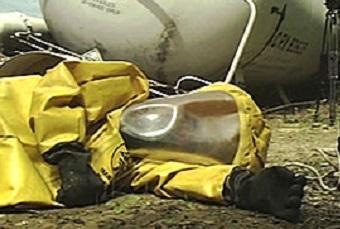As a business owner or supervisor, it is your responsibility to ensure the safety and health of your employees. One important aspect of this is understanding and complying with the Hazardous Waste Operations and Emergency Response (HAZWOPER) regulations set by the Occupational Safety and Health Administration (OSHA).
Heat stress is a serious concern in many workplaces, particularly in industries such as construction, agriculture, and manufacturing, where workers may be exposed to high temperatures for extended periods of time. Heat stress can lead to various health problems, including heat exhaustion, heat stroke, and other heat-related illnesses.
Here are ten tips for businesses to help protect workers from heat stress in the workplace:
- Understand the risks of heat stress and the factors that contribute to it, such as high temperatures, high humidity, and physical activity.
- Develop and implement a heat stress prevention program that includes specific measures for protecting workers from heat stress.
- Provide workers adequate water and encourage them to drink fluids frequently, especially in hot and humid conditions.
- Schedule work during the coolest parts of the day, whenever possible.
- Provide shade or other cooling areas for workers to take breaks in hot conditions.
- Allow workers to acclimate to hot conditions by increasing their exposure over time.
- Provide appropriate personal protective equipment (PPE) to workers in hot environments, such as cooling vests or hard hats with ventilation.
- Train workers on the hazards of heat stress and the importance of taking appropriate precautions.
- Monitor the health of workers in hot environments through medical surveillance programs.
- Have an emergency response plan in place in case of heat-related emergencies.
By following these tips, you can help protect workers from heat stress in the workplace and ensure compliance with HAZWOPER’s requirements for protecting workers from heat-related hazards. Protecting the health and safety of your employees is essential to the success and sustainability of your business.
In addition to the above tips, it is also important for businesses to understand and comply with the various regulations and guidelines related to heat stress, such as OSHA’s Heat Illness Prevention standard. These regulations establish specific requirements for protecting workers from heat-related hazards, including providing adequate water, shade, and other protective measures.
It is also important to recognize the signs and symptoms of heat-related illnesses and to have an emergency response plan in place in case of an emergency. This can include having trained and equipped personnel on site, as well as establishing clear procedures for responding to heat-related emergencies.
Heat stress is a serious concern in many workplaces, particularly in industries such as construction, agriculture, and manufacturing, where workers may be exposed to high temperatures for extended periods of time. Heat stress can occur when the body cannot regulate its core temperature, leading to various health problems, including heat exhaustion, heat stroke, and other heat-related illnesses.
Heat exhaustion is a condition that occurs when the body becomes dehydrated and unable to cool itself effectively. Symptoms of heat exhaustion include heavy sweating, fatigue, dizziness, and muscle cramps. If left untreated, heat exhaustion can progress to heat stroke, a more serious and potentially life-threatening condition.
Heat stroke is a condition that occurs when the body’s core temperature rises to a dangerous level, and the body’s cooling mechanisms are overwhelmed. Symptoms of heat stroke include a high body temperature, rapid pulse, headache, dizziness, and confusion. Heat stroke can lead to organ damage, coma, and even death if not treated promptly.
To prevent heat stress and heat-related illnesses, it is important for businesses to take a proactive approach to protect workers from these hazards. This can include providing adequate water and encouraging workers to drink fluids frequently, scheduling work during the coolest parts of the day, and providing shade or other cooling areas for workers to take breaks in hot conditions.
In addition to these measures, it is important to provide appropriate personal protective equipment (PPE) to workers in hot environments, such as cooling vests or hard hats with ventilation. Training workers on the hazards of heat stress and the importance of taking appropriate precautions is also essential to ensuring the safety and health of workers in hot environments.
It is also important for businesses to have a medical surveillance program in place to monitor the health of workers in hot environments and to have an emergency response plan in case of heat-related emergencies. This can include having trained and equipped personnel on site, as well as establishing clear procedures for responding to heat-related emergencies.
Finally, it is essential for businesses to understand and comply with the various regulations and guidelines related to heat stress, such as OSHA’s Heat Illness Prevention standard. These regulations establish specific requirements for protecting workers from heat-related hazards, including providing adequate water, shade, and other protective measures.
In conclusion, protecting workers from heat stress in the workplace is essential to the health and safety of workers and the success and sustainability of a business. By following the above tips and complying with the relevant regulations and guidelines, businesses can help prevent heat-related illnesses and ensure the safety of their workers in hot environments.
Do you need HAZWOPER Online Training?
Try a free demonstration of HAZWOPER: Heat Stress










